
What Is Employee Activation?
I’ve been spending a lot of time lately speaking about employee activation. I’m not talking about employee advocacy (getting your employees to blindly share your press releases.) Employee activation even goes beyond employee engagement. Although you need engaged employees to activate.
What is employee activation?
Employee activation is a formal program that encourages employees of a business to organically and authentically create and share content about the topics that interest them.
Want to run a more effective organization? Employee activation is the key to driving your business into the future with the resilience required to move further into the post-digital era.
When your employees are activated, they are engaged, more productive, and will help to establish your business as a trustworthy, authentic brand with whom your target buyers can get excited about doing business.
Let’s face it. Things are moving fast in workplace culture. Businesses who have put in the foundational work for a successful digital transformation are able to offer a better customer experience and live up to the high bar set by the customer-centric marketing model.
But, we’re not done evolving. Right now, visionary companies are seeing that the next stage is not forging a more intensive relationship with customers with all our sophisticated digital tools. It’s time to look internally.
Where the focus has been on empowering customers, now we’re seeing the benefit of empowering employees too. It’s a more dynamic level of the engineered serendipity I talked about a few years ago where you win, I win, the customer, employee, manager, marketer, brand – everyone wins because we’re elevating the connections with more technology and more information.
The next stage after digital transformation and customer centricity is employee activation. Managers and leaders, at both the executive and department level, need to create a more meaningful work experience for employees.
For those of you who just can’t wait to get down to activating employees in your organization (without going through a treasure trove of data and insights), here’s a video:
Want to read on? First, a clarification:
Employee Activation vs. Employee Advocacy
True activation goes far beyond the basic, two-dimensional concept of holding out a carrot to get your employees to become brand advocates. You want to activate your employees so they become advocates. But, the end goal is much broader than asking your employees to share press releases and brand content on their social media pages.
The intent is to not just incentivize but to empower. Change the intention, and you alter the direction in which your business is moving.
I believe employee activation is the process of encouraging your employees to create and share their passions and expertise. This shows your employees they are valued, giving them more confidence to express their own personal ingenuity at work, which in turn, reflects on the level of customer service, sales and marketing, and even the quality of the products or services offered by your company. Ultimately, the intention to empower your employees to greater success puts your organization on the course to greater, and more sustainable, success.
Why Should You Care About Employee Activation?
“Employees are a company’s greatest asset.”
– Anne M. Mulcahy, former Xerox chairperson and CEO.
The digital revolution has shifted everything from how brands and consumers interact to how your employees want to work. Employees are now seeking flexibility from employers with work from home opportunities and flexible schedules.
The demand for employer flexibility will only increase over time. A survey by Gallup reported that 43% of employed Americans spent at least some time working remotely. It also indicated that a lack of flexibility from employers is one of the main deciding factors to either leave for a new job or become a full-time freelancer.
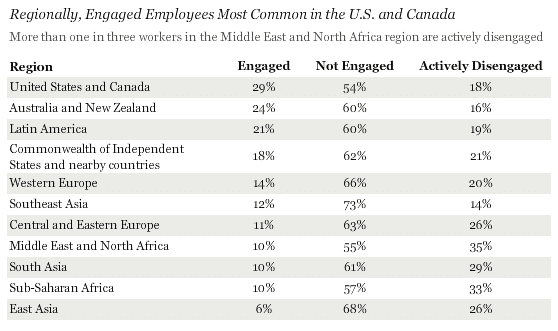
In addition, your employees are not feeling the love. Eighty percent of employees feel they can do their jobs without their managers and cite communication breakdowns, unapproachable management, lack of motivation and trust as the reasons for their discontentment.
Of the U.S. employees traditionally employed, only 29% are engaged with their work, with 54% not engaged and 18% actively disengaged. An actively disengaged employee is defined as someone who is “unhappy and unproductive at work and liable to spread negativity to coworkers.”
Or, as I call it, “The people who are stealing office supplies.”
It’s a costly problem for you and your company.
Not only do disengaged employees tend to spread the negativity to colleagues, but this also does damage to client relationships and prevents company growth.
It is estimated that actively disengaged workers cost an organization 34% of their salary. If one actively disengaged employee makes $55,000 a year, their unhappiness costs a company $18,700. Multiply that by 18% and you have a major problem.
How Employee Activation Can Unlock Passion and Potential
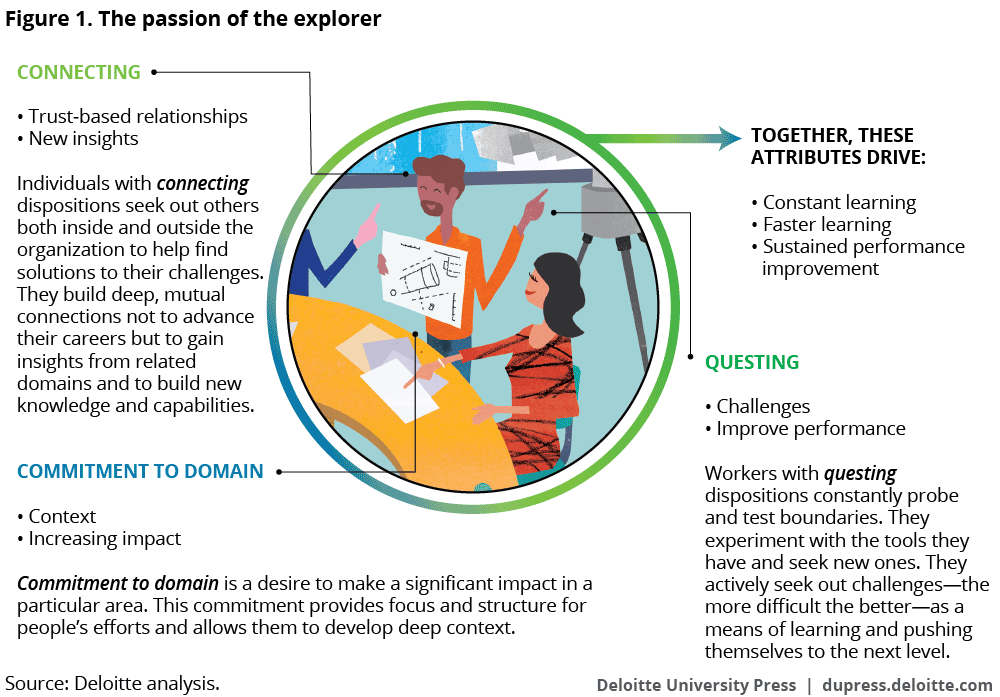
Activating your employees helps them to see their work as more than just a job, but rather something they can be truly passionate about. True passion results in employees that actively seek out challenges, connect with others to find solutions, and want to make a positive impact both at work and in the world.
When you introduce a formal employee activation program to the workplace, you encourage your employees to create and share content around their own passions and interests. This demonstrates the skills and talents of your team, as well as helping to raise brand awareness and boost the authenticity of your content as a whole.
Giving your employees free rein to create content allows them to explore the topics that interest them and shows that you trust them and respect their opinions and knowledge. 55% of CEOs believe that a lack of trust in the workplace is a threat to their organization.
What Does Employee Activation Involve?
So, how can you activate your employees?
The key is in understanding what employee activation truly means. Hint: it’s much more than offering a carrot.
Employee activation is all about motivating your employees to share content with their social networks. We already know that word-of-mouth marketing is one of the most effective techniques for generating leads and boosting sales.
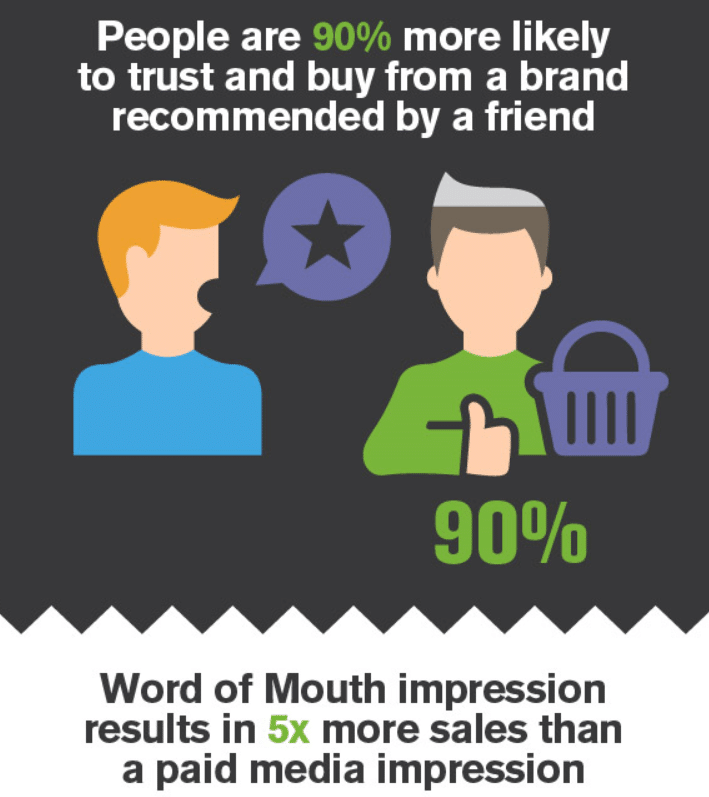
Employee activation takes this one step further, tapping into your employees to expand the reach of your brand. Just how much of a difference will this make? It can potentially have a seismic effect. This is because, for the typical business, the social networks of employees are 10 times the size of the social following of the company itself.
When you look at examples of excellent employee advocacy programs in action, you’ll see that it’s more than a few tweaks to your organizational processes and internal communications. It’s a shift. A transformation that’s going to take time and conscious effort, but one that you can fully achieve with the help of a few tools, tips and strategies to help you activate your internal experts.
“When you can activate your entire company to be brand ambassadors, the full effects of social selling can be felt globally.”
– Koka Sexton, Sr. Social Marketing Manager formerly of LinkedIn and Hootsuite
Being able to activate your employees offers more benefits than a wider social media net for your brand to reach out to. Way more.
Your organization will experience a cascading positive effect because as you put in the effort to activate your employees through training, supporting, mentoring, and mobilizing, you’re also aligning their work with the purpose and mission of the business. You’re making their job more meaningful.
This isn’t just a shiny ideal. Purpose is what makes getting out of bed in the morning to come to work appealing. And it’s something consistently profitable companies have been focusing on for years.
Take Southwest Airlines for example. They focus on both company culture and customer service and make a point of recognizing employees regularly on their website, their brand magazine, and they have a library of videos sharing stories form real customers who appreciated the experience they’ve had with the brand.
Taken further, active employees have a lot to gain. When they share their insights, expertise and vision, they are building their own personal brand, which can support their careers in the long run.
“If you help brand your people, they will help brand your company.”
– Jennifer Jones Newbill, Dell
86 percent of those who have been a part of a social media advocacy program for their job have said it has had a positive impact on their career.
You’ll have employees who are both engaged and motivated, and who can benefit themselves from their experience as an employee advocate. The more they invest into the company through sharing content and brand advocacy, the more they have to gain professionally. Win-wins tend to be good for everyone.
Here are just a few of the bonuses other companies are already seeing from a serious approach to employee activation:
- Improved reputation. Increased brand advocacy from employees can lead to a 43 percent more favorable public image.
- Easier to attract top talent. Employees are trusted 3 times more than your organization’s CEO by potential recruits. When they are visible on social media as brand representatives, it’s a lot easier to attract quality hires.
- Increased employee retention. Companies with active social engagement are 20 percent more likely to retain talent.
- Better brand storytelling. Want more authentic content? Get it from the people who are the heart of your business by inviting them to share their voice. Neil Gunn, the Digital Strategy Advisor for the World Wildlife Fund in the UK says, “The theory is that people who have the stories to tell are on the ground. If you really are going to do social well, you need to make the connection with those who have the story to tell.”
The Brand vs. Employees Who Represent Your Brand
What if your organization was staffed by a team of experts – employees who are skilled, driven, and have a lot to offer, not only to your customers but also to society?
Imagine what a powerhouse your company would become. We’re not just talking consumer trust here. This is about respect and your audience fostering a deep confidence in what your company can do for them – because your employees are recognized as thought leaders and individuals who are passionate about what they do.
Here’s the thing. You are sitting on this golden egg right now. Your employees are skilled experts with their own unique and worthwhile beliefs, perspectives and insights to share. But, it’s your job to activate them in order to harness this potential.
Through employee activation, you’ll find yourself as the coach of the dream team of your industry. You’ll be leading people who your buyers turn to for advice, tips, and to learn how things are done. For B2B brands in particular, where confidence in your brand supersedes details like pricing strategy and ad campaign by a long shot, activated employees will motivate your buyers and forge customer loyalty like nothing else can.
The reality is, ‘your brand’ is an entity without a face. It’s a thing. It has no family. It’s never struggled. It hasn’t accomplished anything. So, how much, really, can you expect consumers to trust it?
But, when your employees are themselves the face of your brand, you’re giving your audience someone to believe in.
That’s powerful stuff.
Still emerging from (and for many, still living in) the traditional corporate structure and the traditional marketing methods, in which a structured, controlled, carefully crafted brand identity is used to market to customers, a lot of companies aren’t tapping into their employees’ voices for marketing, sticking with the brand voice only.
And let’s be honest. Change takes time. So, let those other companies slowly wake up while you are running with your industry’s dream team.
Employee activation involves relinquishing control and empowering employees to share their expertise. It’s giving them a platform, supporting and encouraging them to express themselves and share their own personal brand, which, in turn, comes back as a positive reflection of the ‘mother brand.’
That’s not just a marketing technique. It’s a shift in organizational culture. But, it’s one that will stretch the reach of your marketing to a whole new level, helping to engage, inspire, and retain customers.
Your Employees Are Micro Influencers
Like word of mouth marketing, using micro influencers – niche experts within your industry who have a social media following – is a powerful tool for building trust with your target buyers. A study by Expertcity found that 82 percent of consumers are highly likely to follow a recommendation from a micro influencer.
Your creatives, data analysts, strategists, and other experts on your team are the skilled, passionate, knowledgeable influencers people want to learn from. You have to look at who your audience is looking for, but there are people within your organization who can expand the reach of your marketing simply through sharing news, insights, and their own thoughts on personal or business social media profiles, as well as other channels.
Here are some examples:
- Financial services – what financial advice are your finance experts sharing by writing featured blog posts on your company website?
- Software company – encourage your internal experts to share their knowledge through online tutorials. Hold Q&A sessions where your audience can ask questions – even better, use Facebook live streaming or a live chat platform to up the appeal of your marketing event.
- Even B2C brands can harness their internal micro influencers – think beauty tutorials, golfing instructional videos, healthy eating eBooks, style guides – all created by your internal experts. This is how you can get premium content to generate leads, and at the same time, build relationships between your customers and your experts/employees.
When you tap into your employees for micro influencer campaigns, you also tap into their social networks. But, more importantly, in the long-term you are effectively helping to grow their individual online presence, giving them even more influence with your audience.
The Benefits of Employee Activation
Better communication. Inspired advocacy. Alignment and shared vision. The results of engaged, activated employees are mind-blowing.
Faster Growth and More Revenue
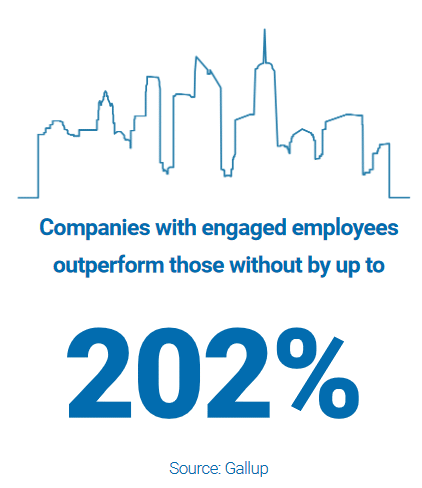
- A boost in customer retention rates by as much as 18 percent.
- A 20 to 25 percent jump in productivity.
- The Workplace Research Foundation found that increasing employee engagement investments by 10 percent can increase profits by $2,400 per employee, every year.
But, just like accepting the hard work and multifaceted change that is necessary for digital transformation, this next business evolution doesn’t happen overnight.
Especially when we are currently working with some dismal statistics. The number of enthusiastic employees has been edging up slightly over the past few years but it’s still low.
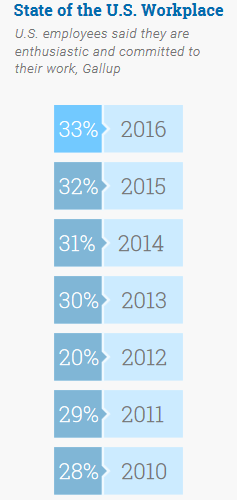
Imagine how potent your marketing would be with 99 percent committed and connected employees, not 33 percent?
High-Quality Employee Engagement
By harnessing the potential of the people who know your brand better than even your most devoted customers, you can tap into a rich source of brand advocacy and fuel growth. At the same time, you’ll boost employee engagement.
Engaged employees have a vested interest in your organization’s success. They are aligned with your messaging and vision. And they offer something much more important than greater productivity.
A positive employee attitude can engage your customers as well. Look at it this way. As many as 68 percent of customers abandon a brand as a direct response to poor employee attitude.
The bulk of customer brand perception – about 70 percent – doesn’t depend on the ingenuity of your video marketing strategy or the quality of your products – it’s human interaction with customer service representatives, your employees at in-person events, email and live chat responses, and the content your employees are sharing about your brand.
When your employees do share your company’s content – something that’s not likely to happen without motivation, only about 3 percent of employees share company-related content – you are looking at a healthy boost of customer engagement.

This positive impact is exponential. When you can motivate 6 percent of your employees to share content, customer engagement increases by 60 percent. With 10 percent active employees, you’re looking at the potential for a 100 percent increase.
The bottom line is, the experiences customers have with your employees shape the impression of your brand more than anything else.
On the other hand, when you fail to activate your employees, you’ve effectively created a financial black hole for your organization. Disengaged employees cost businesses from $450 to $550 billion each year.
True Trust
Activation is a trust builder all around.
Guess what? When you trust your employees by empowering them with the right platforms, tools, and encouragement, they’re more likely to trust you. This is more important than simply improving work relationships.
According to a recent study, for 93 percent of employees, trust in a direct boss is critical for work satisfaction. And, listen to the research or just common sense and life experience – employees who aren’t satisfied at work can’t do their best at work.
But, here’s where employee activation becomes really monumental if you get it right. Your buyers trust your employees, possibly more than upper management, the PR department, or general brand messaging.
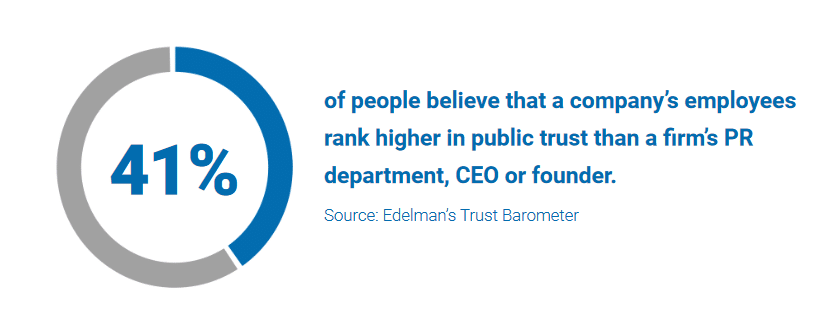
Marketing Boost
One of the biggest reasons employee activation is so effective is that it is another channel for person-to-person communication. You already know how useful word of mouth marketing (WOMM) is – 64 percent of marketing executives view WOMM as the most effective marketing method and it’s believed to drive $6 trillion in consumer spending annually.
But, WOMM is only as powerful as the voice the word is coming from. Where a lot of marketers go wrong is they believe social media marketing is WOMM. But, the reality is, as much as two-thirds of word of mouth that makes an impact happens offline.
Market researcher and author of Shops that POP, Pamela Danziger explains:
“While digital WOM is important, the most effective and powerful WOM is analog taking place person-to-person. Engaging customers in conversation that makes them feel valued and appreciated can go a long way to encouraging them to tell others…Retailers need to put a word of mouth marketing system in place that is heavy on the analog side of the equation that will amplify social media efforts.”
When your employees are invested in the company they work for, not just to earn a salary, but because they are viewed as a valued part of the brand, they are more likely going to have those engaging conversations with customers.
Think of it this way. What they say about the company they are a part of, is also what they are expressing about themselves, their career, and what they believe in for their future.
Inspire your employees to become a part of your brand messaging, and your marketing takes on a whole new level of importance and reach. How you activate your employees will depend on what works for your organization and what specific goals you want to achieve, but here are a few strategies you can use:
- Invest in your employees’ growth with skills training
- Develop an internal mentorship program
- Hold regular one-on-one’s to give employees a chance to directly tell you what they need in order to do a better job (hint: this is 1000 times more effective than employee surveys)
- Set up and encourage individual social media accounts supported by your brand or web pages for your employees to share content and ideas and to showcase their own work and expertise
- Offer more opportunities for employees to take on temporary or rotating leadership roles
- Feature their stories, projects, and accomplishments on brand channels
Trust that the efforts you put into your employees – from the intention of empowering their passions – will pay off, and you’ll get back way more than you put in. They’ll have everything they need to advocate for your brand, as well as a reason to do so because they know they are working for an employer who believes in them.
A Word on Individual and Brand Authority
Consumers don’t just have higher expectations today, gravitating towards quality content, better experiences, and meaningful brands. It’s also harder to gain their trust.
Over 40 percent of American consumers trust brands less than they did 20 years ago. And, nearly half want to see a stronger identity in the brands they engage with.
In order to, not only gain back consumer trust but also to keep it, brands need to reveal the man behind the curtain and stop hiding every company’s greatest asset – employees.
Which is why employee activation is critical to energizing your marketing right now, let alone reaping the productivity rewards of an engaged culture. Studies show that consumers are more likely to buy from brands they feel are authentic, and are less likely to be swayed by ads.
Activated employees are the key to establishing your brand as a trustworthy company in this evolved consumer-brand-employee relationship matrix. When they are engaged and empowered, they become something more profound than brand advocates. They are the passionate people who your target audience can look to as industry thought leaders.
A company recognized for its skilled, enthusiastic experts, on top of quality products or services, dedicated customer service, and a strong brand identity – now that’s a force to be reckoned with.
But, activating your employees to be more than passive participants is going to require more than an incentive program. You have to create that spark in your employees and then commit to keeping it alive.
Tips for Activating Your Employees
So how do you create these passionate and loyal employees? How do you motivate them to be more vocal about your brand? It’s not just a case of throwing more money at them. In fact, salary is rarely linked with employee engagement – 60% of respondents to a survey of small to medium-sized businesses said they’d take a job with lower salary in exchange for better benefits.
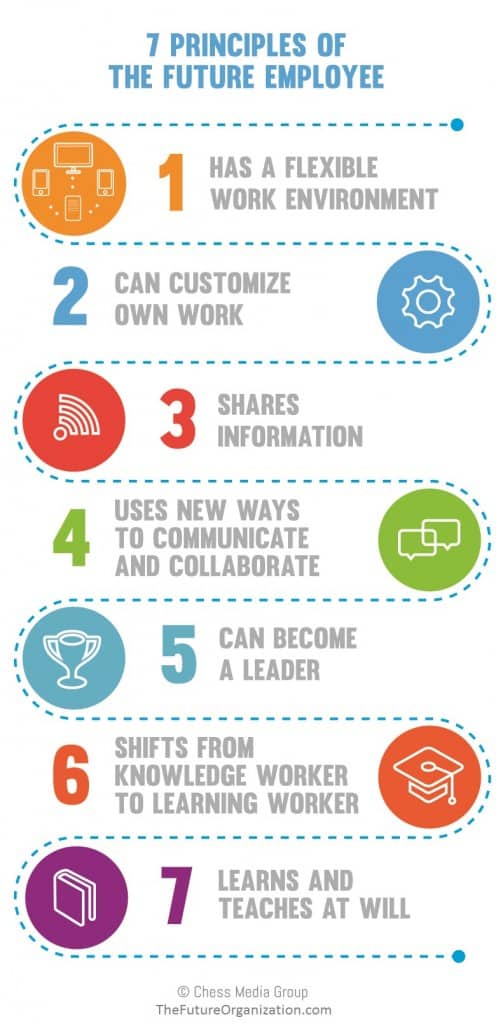
Just like all the work you’ve been doing to engage your buyers – exploring new communication channels, refining messaging as you learn more about your customers, finding effective ways to connect with your target audience, and developing more sophisticated content marketing strategies – it’s time to do it with the people who are the driving force behind your company.
Create a Culture of Communication and Transparency
You can’t expect your employees to be fully committed to your organization if they’re unable to communicate effectively, or they don’t fully trust in higher management.
For these reasons, it’s essential to create an environment of full transparency at work so everyone can work toward common goals. Define your company mission statement in a way that all your employees can understand and make sure it’s at the core of everything you do.
Improve Communication Channels
So, you can get up on the soapbox and tell your employees you want them to shine. You can send out an internal newsletter or a weekly email.

Or, you can upgrade your internal communication channels and empower your internal communicators in order to more effectively activate your employees.
Communication is likely going to be a roadblock in getting your employee activation initiative off the ground unless you tackle this problem early on.
- How do your employees like to communicate?
- What channels do they respond to?
- What works and where are the failures in collaborative platforms that you are using right now?
- What communication tools are available today thanks to technology that your organization hasn’t yet adopted, but should?
A study by Siegal+Gale found that a third of employees find their workplace complex and difficult to navigate because of a lack of transparent communication.
Nurture Internal Talent
An organization is only as strong as the talent of its workforce. And yet many businesses overlook the fact they have a pool of talent potential right in front of them.
While it’s not always possible or preferable to recruit internally, make employee advancement a focus of your company culture. Investing in training and development programs for your existing workforce can help to uncover hidden skills in your current employees and develop those who have natural leadership qualities into experienced and dedicated managers and C-suite executives.
Start Small with the Social Stars You Already Have
Talent consultant Lars Schmidt warns that starting an employee activation initiative with your HR department or upper management can backfire. “Employees may be skeptical if HR or leadership pushes them to act. If they see their peer participating, they’ll be more compelled to follow suit and your initiatives can grow organically and authentically.”
Identify your employees who are already advocates on social media and start small with them. Once you’ve trained them to use their social profiles or their dedicated branded profiles, you have your internal leaders who you can then use for a larger program.
Reward High Performers
It’s essential to conduct regular employee assessments so that managers can review the performance of each member of their team.
This not only means that any problems can be nipped in the bud and areas for improvement can be identified, but also that high performers can be recognized and rewarded for their efforts.
Make sure there’s a clear progression path for those who are willing to put in the work and effort so no employee feels stuck at their current level. Nurturing the talent and motivation of your employees and rewarding progression means they’ll be more satisfied at work and less likely to leave to work for one of your competitors.
Prune the Deadwood
If individuals remain actively disengaged despite your employee activation efforts, you may need to accept that they’re not a good fit for your organization.
Marketer Gary Vaynerchuck is open about his policy of firing so-called “toxic” employees despite their skills and experience, pointing out that negativity spreads and can quickly bring down other employees.
Of course, this should always be a last resort, and regular feedback is essential to give employees a chance to improve their performance and behavior.
Make It about Personal Branding
The best way to motivate brand advocacy within your organization isn’t by offering a financial or physical reward. It’s about personal incentive.
Especially for B2B brands, employees have the chance to share their own expertise and establish themselves as industry experts while they work for you when they post well-researched or thought-provoking content on LinkedIn, publish how-to videos on YouTube, or share links to content on Twitter and Facebook.
Your employee activation should be about empowering your employees to be the best professional version of themselves. This, in turn, benefits your brand as they are your organization’s social representatives. It also fosters an authentic interest in giving their best to the organization they work for.
Approach brand advocacy as advantageous for both company and employee and you’ll get sustainable interest.
Teach Your Employees to Fish
Have a support system in place at the beginning. You don’t have to start out with a social training academy like Dell or Adobe. But, at least have established guidelines, tips and best practices, and identify social experts within your organization for individuals to go to with questions or for some one-on-one guidance. This will set the foundation for a successful program.
An effective strategy is to create regular educational content. Webinars, a library of educational videos filled with social media pointers, training sessions, or short weekly or monthly meetings are all methods you can use to make sure your employees know what’s acceptable to share and the best ways they can be successful sharing their expert voice on various social media platforms.
Make Social Sharing Convenient with Curated Content
Your employees are more likely to be active when you make it easy for them. As part of your employee activation program, you can regularly supply curated content. Include relevant blog posts, videos, industry news, and case studies. Then, encourage your advocates to edit the posts so as to use their personal voice.
Incentivize with Contests
You won’t be able to maintain a sustainable employee advocacy program on incentives alone, but they definitely can keep people interested. Think weekly contests or giveaways. This type of motivation is more about keeping your employees engaged than it is the reward itself so make your contests fun and interesting.
Leverage Technology
Yes, there’s an app for employee activation. In fact, there are several, including plenty of machine learning algorithms and AI-inspired platforms. Take advantage of these tools to make motivating your employees that much more effective.
- EveryoneSocial is the employee advocacy platform used by Dell and Adobe and makes it exceedingly simple for employees to share content to their social networks at scale.
- Influitive is an advocacy platform that is used by companies like Quickbase and MongoDB. Their AdvocateHub motivates advocates to share content, reviews, and testimonials across the social web.
- DrumUp lets you create custom posts and curate content. It also comes with a point system to recognize social stars and analytics to track activity. DrumUp uses machine learning and Natural Language Processing, which means you’re going to see highly relevant content with the curation function.
Use Your Advocates Wisely
While your employees’ social profiles may have the Midas touch, you still need to be careful how much you use your employee advocates. This is true for two reasons. First, you don’t want to make your advocates feel pressured to spend too much time on social sharing. For them, it should be simple and easy, not another task. Otherwise, you’ll have less people interested in your voluntary program.
Second, and more importantly, too much social sharing will dilute the value and authenticity of employee content. The reason employee sharing is so powerful is that it is an individual sharing content rather than the brand. If your employees’ social networks are being inundated by posts, people are going to start ignoring the content and, at some point, it will start to feel like brand marketing content rather than authentic insights.
Build an Employee Activation Program
As well as creating a supportive environment and company culture to foster employee engagement, introducing a formal employee activation program focused on content brings all the above-mentioned benefits as well as acting as an effective marketing channel.
Encourage your employees to write about their work projects, passions, and achievements and share this content on your company media channels. Interview your employees and publish as a written interview or podcast to give a more human face to your brand.
Setting up an official program for this kind of content production not only shows that employees are allowed and encouraged to express their opinions and ideas on behalf of your brand, but it also means you start building a repository of high-quality and valuable content that will serve your business for years to come.
How to Run Your Employee Activation Program
I’ve helped numerous Fortune 500 companies launch their employee activation programs. While each organization is different, each launch follows a similar progression. Here are the steps you need to take:
Step 1: Make an Honest Assessment of Your Current Situation
This part may be a bit hard to swallow at first but I promise it gets better. You need to get a feel for how your employees are feeling about their jobs and the company. I found the following approach works well for gauging your employee’s engagement level.
Several years ago, I met with a number of clients in the business services and consumer industries who were struggling. We asked over 200 employees at each company one question for four quarters in a row: does your manager champion your idea?
It forced our clients’ managers to readjust how they approached their relationships with their employees. By the fourth quarter, employee engagement had increased by nearly 20%.
Step 2: Develop a Social Media Strategy and Plan
Similar to any new marketing initiative, you need to take your company’s objectives and goals and determine the best tactics to reach your target audience on their preferred social media platforms.
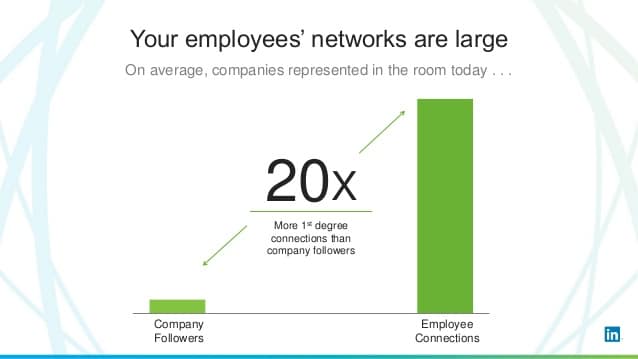
This includes a road map that identifies the content pieces and key messages to be used, while also determining the KPIs that need to be monitored.
Step 3: Start Small
Select a small group of employees to take part in a pilot program. This allows you plenty of time to identify any problems that need to be addressed before it’s implemented company-wide.
Step 4: Educate Employees on Social Media guidelines and Best Practices
Many management teams cringe when they think of asking employees to promote their brand on social media. That’s why it is critical that employees are 100% clear on what is and is not permitted. I recommend that you educate your staff with tips and strategies that help strengthen the messaging and determine whether or not approval processes need to be in place.
Step 5: Employee Alignment with Your Brand
A successful employee activation program means the staff is aligned with your brand and its mission. To do so, they need to understand that employee activation means they are given ownership of your brand’s messaging. This sense of ownership should inspire them to want to join and continue being your brand’s advocate.
Step 6: Provide Fresh Content and Identify What Can Be Reused
It is up to your management team to continuously provide fresh content to employees and identify what content can be recycled. This is where the plan you came up with in step 2 is critical as you do not want any long periods of silence.
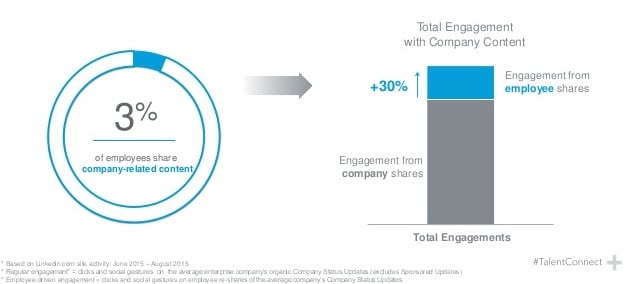
Step 7: Reciprocate with Investment and Rewards
Help your employees understand that by being an advocate for their employer, they have an opportunity to become thought leaders in their specific role. Provide them with the necessary training in social media to help them reach their goals.
Reciprocation extends beyond professional growth. Provide participating employees with what they want – an extra day off, a work-from-home day or maybe tickets to a concert.
Step 8: Monitor Your KPIs and Adjust Quickly
This is the part of the employee activation program your boss will care most about: the return on investment. By setting up a dashboard to monitor the progress of your activation program, you can quickly identify what is working and make adjustments to what is not.
Over to You
Employee activation gives your brand’s online presence and reputation a mega boost of trust and engagement. Leads that are generated from employee social sharing convert seven times more often than other leads. It can increase sales and establish your brand as a more trustworthy organization. It can even help you attract premium hires to help your business succeed more in the future.
On the other hand, overlooking the potential of your employees can be a fatal error. Not only will you miss the chance to rake in more leads and sales and to enjoy a brand reputation boost. You are also missing the opportunity to help your employees grow professionally and to experience a greater sense of value and connection with the company they spend 40 plus hours a week working for – and this will cost you big time.
I have been on both sides of the equation: the employee who is not thrilled with their employer and the employer dealing with an actively disengaged employee. This is why I am passionate about helping brands empower their employees while drastically improving their marketing efforts and revenue.
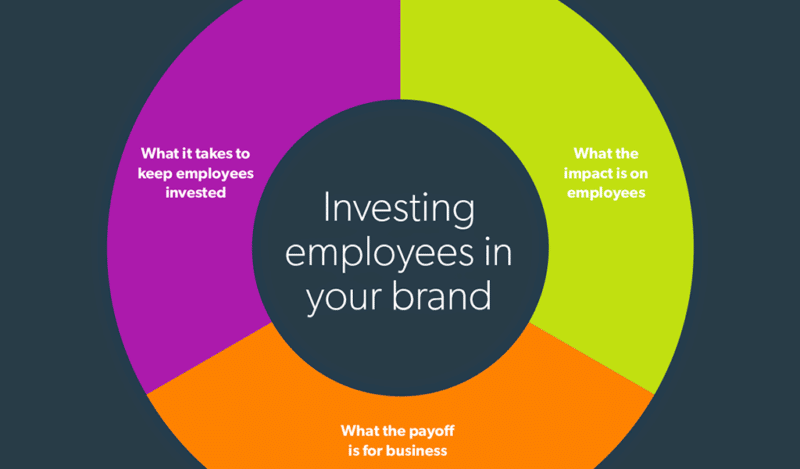
Are you interested in activating your own thought leaders inside your business today? Contact me here and let’s talk about how we can help.
I use a combination of personal branding, consistent social audience building, and support in creating authentic and ongoing thought leadership content. I’ve done it for myself. I’ve done it for the companies I’ve worked for. I’ve helped activate hundreds, even thousands of thought leaders. I’ve done it for numerous clients. And I can do it for you.





